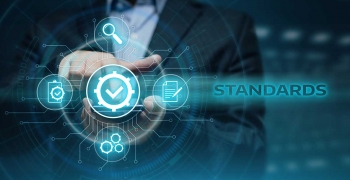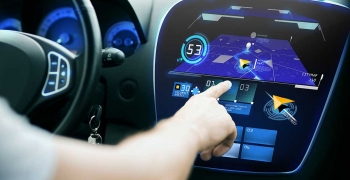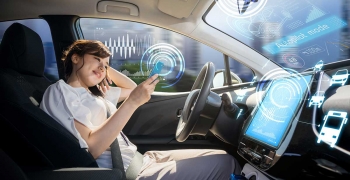Flying Green: The Electric/Hybrid Future of Aerospace

When George Lucas imagined cell-powered flying cars in his ‘Star Wars’ prequels, he wasn’t far off in predicting the future of transportation. With leading players in the aerospace domain inclining toward the idea of electric and hybrid aircraft, the next couple of decades are set to unfurl the possibilities of not just flying cars, but cell-powered, long-range commercial flights as well. As the march toward electric and hybrid airplanes grows more determined with each stride, we find ourselves—yet again—on the verge of making fact out of science fiction.
Why Electric Airplanes are in the Works
When it comes to environmental impacts, the global aviation industry accounts for a mere 2% of greenhouse gas emissions. Nevertheless, there is a growing environmental concern. Since 1990, the industry has witnessed an 83% rise in emission levels. The primary reason for this has been the increasing number of fossil fuel-powered aircraft taking to the skies. Gaseous emissions, however, cannot be singled out as the sole environmental impact. Water vapor emissions at high altitudes brings about a phenomenon called contrails. These residual plumes of exhaust contribute to the global warming effect by trapping heat emanating from the Earth’s surface.
While the adverse effects on the environment and stringent environmental regulatory standards are a major motive, they are not the only prompts for shifting toward greener power-and-propulsion systems. A move toward electric/hybrid propulsion systems can translate to a business edge for companies investing in them. One of the most decisive advantages of electric motors is that they are lighter and cheaper than their gas turbine counterparts.
Electric and hybrid airplanes are no longer just a notion. The eco-friendly and lucrative aspect of this transformation in the aviation industry is turning out to be a strong instigator for many companies. A major European budget airline recently announced that it is en route to launch a 180-seater, fully electric-powered airplane by 2027. With the move away from fossil fuels, the new design is capable of reducing noise pollution by 50% as well as minimizing the cost for airlines by 10%.
Reimagining Aircraft Design—Benefits and Roadblocks
The lighter weight of the electric motors opens up a world of possibilities for design. This particular advantage of the electric motor allows them to be easily incorporated into new designs as well as existing electric-compatible designs. An example of this which is poised to majorly affect urban air mobility solutions is the usage of electromagnetic power on the next generation of tilt-wing vertical take-off and landing (VTOL) aircraft. The flexibility of electric cables grant them an obvious compatibility advantage with wing orientation over rigid fuel lines.
In terms of aerodynamic design, the prospects are quite exciting as well. A new design incorporating an electric motor can implement an efficient boundary layer ingestion of air at the rear of the aircraft to reduce drag. The revolution in aircraft design goes a step farther with the consideration of distributed propulsion. The distributed propulsion design could do away with the conventional tail plane design entirely transferring yaw angle control to differential thrust even in case of selective propeller failure.
The electric revolution in aircraft design has already begun taking shape. A newly designed fully electric plane that weighs 300 times less than a fuel-powered plane of the same size is capable of 600 mile range flight powered by its 980kWh Li-ion battery. The fresh take on design equips the plane with one main propeller and two wingtip propellers.
There are, however, some challenges along the road to such a revolution. One of the most obvious obstacle of designing and implementing an electric/hybrid aircraft is that of an efficient power source. A high-density power source is required to ensure a lighter aircraft without the need to sacrifice on the flight range for intercontinental flights. Other challenges surrounding these new-age aircraft involve the management of high-voltage systems and energy-to-speed ratio. Thermal issues and tolerance offer roadblocks from a mechanical engineering vantage. In a recent step forward, a British research group funded a GBP 6.1 million project to undertake research to overcome these obstacles. The project is focused on the development of high-density power systems and the tackling of thermal issues on high stress surfaces within the engine, such as gear teeth.
The Skies Ahead
We have steadily begun flying in the right direction. The promise of a cleaner flight over new and exciting frontiers has been appealing to companies all over the world. One example that has come to the fore is that of Zunum Aero. The Seattle-based aerospace company plans to commercially deploy electric planes. The aircraft under development is estimated to have a cruise speed of 545 kilometers per hour with a flight range of over 1,100 kilometers. The revolutionary design of the aircraft features a V-shaped tail and fully electric propulsion gear powering twin engines.
While Zunum has plans to take to the skies by 2022, three major players in the aerospace domain have teamed up to design and build a hybrid electric plane for commercial application by 2025.
Aviation has traversed a long road since the first great airships of Ferdinand von Zeppelin. Today, we stand facing the fantastic future from works of science fiction. And possibly, venturing beyond.




